I began looking for Autodesk Eagle alternatives in June 2023. That’s when Autodesk said they would stop selling and supporting Eagle by June 2026. This was disappointing news for me because I enjoy electronics as a hobby.
On weekends, I often design my own circuit boards for projects like LED mood lights or simple smart home gadgets. For years, I used Eagle because it had all the tools I needed for my personal projects and small freelance work, and it was affordable.
Working in the FixThePhoto software review team, I’ve been searching everywhere for good Autodesk Eagle alternatives for the last three months. I looked on Reddit, watched lots of YouTube reviews, and asked my coworkers which tools they recommend. Together, we tested over 20 Autodesk Eagle alternatives and found a few that we think are the best options.
I used to always choose Eagle because it was lightweight and simple. The program only needed about 200 MB of space, and it worked well even on older, slower computers. The best part was that you could just buy it once (for around $169) and own it forever.
But then, Autodesk changed it. They started making people pay a yearly subscription and later combined it with a much bigger program called Fusion 360. For someone like me who only uses it sometimes, it became too expensive and too complicated.
In June 2023, Autodesk announced that they will completely stop selling and supporting their Eagle software on June 7, 2026. For people who currently have a subscription, you will not be able to renew it after a certain date. If you pay every month, your last chance to renew is March 2024. If you pay once a year, your last renewal will be in March 2025.
However, many people don’t like Fusion 360 as much as they liked Eagle. Here is the main reason:
Don’t know what to do with your old Eagle designs? Let me show you how I managed mine. You can do it too.
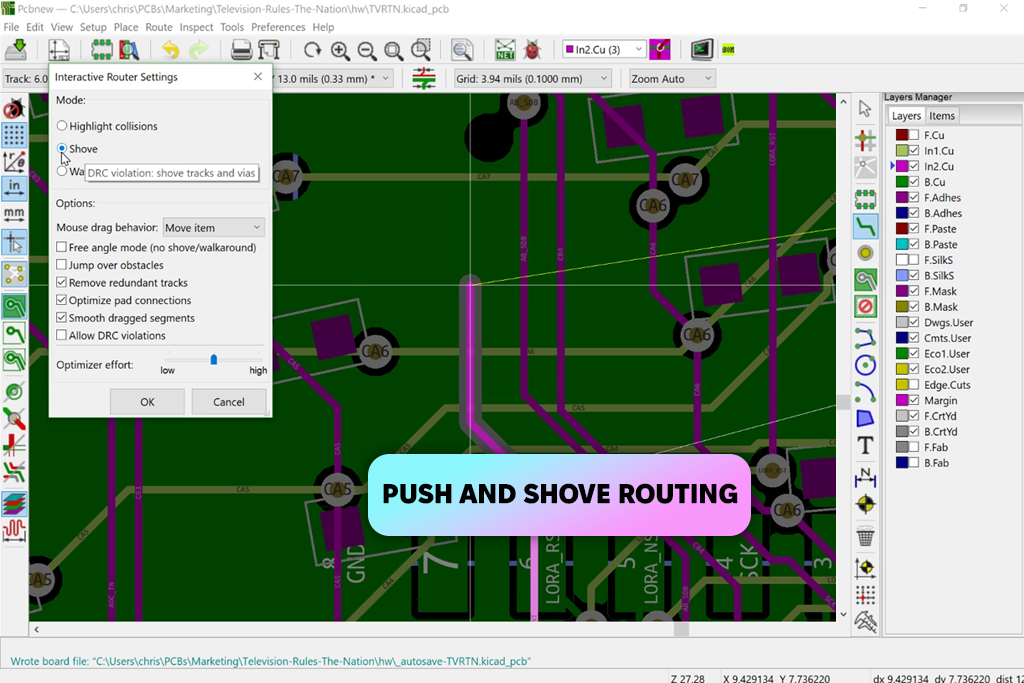
I began using KiCad after seeing many people on Reddit recommend it as the best Autodesk Eagle software alternative. I got the latest version of this open source CAD software and spent a week redesigning one of my old circuit boards from the ground up. This helped me understand how its tools and processes work.
The first thing I liked was how much you can do without limits - there are no fees or restrictions on board size or number of layers, and all the important tools are free. The diagram editor felt newer than Eagle’s, and I could set up my own keyboard shortcuts, which helped me work faster once I got used to it.
The tools for designing the circuit board were just as good. The 3D view was especially helpful - it let me see exactly how the parts would fit together, which was clearer than in Eagle. When I brought my old Eagle files into KiCad, it worked well for simple designs. But for some more complicated projects, the connections to my custom parts didn’t always work correctly.
It took me a little while to get used to KiCad because some words and menus are different from Eagle. But after a few hours, I started remembering the new way.
Pricing: Free forever

A coworker who used Altium Designer in her old job suggested I try it. I knew it would take time to learn, and it did, but it also turned out to be very powerful. I tried it out by making a complex circuit board, the kind that would have been hard to design in Eagle.
Altium Designer felt like professional-grade software - it had every feature you could imagine, much more than Eagle. Tools for routing traces, managing delicate wiring pairs, and error checking were especially powerful. But for a hobbyist like me, it was almost too much, like using a high-end AutoCAD alternative for a small home project.
Altium Designer was very helpful for a client project because it could show me which electronic parts were available and their exact prices. However, the software is expensive (around $3,000 per year), so I wouldn’t keep it just for occasional freelance work. Still, for designing large or complicated circuit boards, it worked better than any other program I’ve tried.
Pricing: From $460/month or $3,000+/year
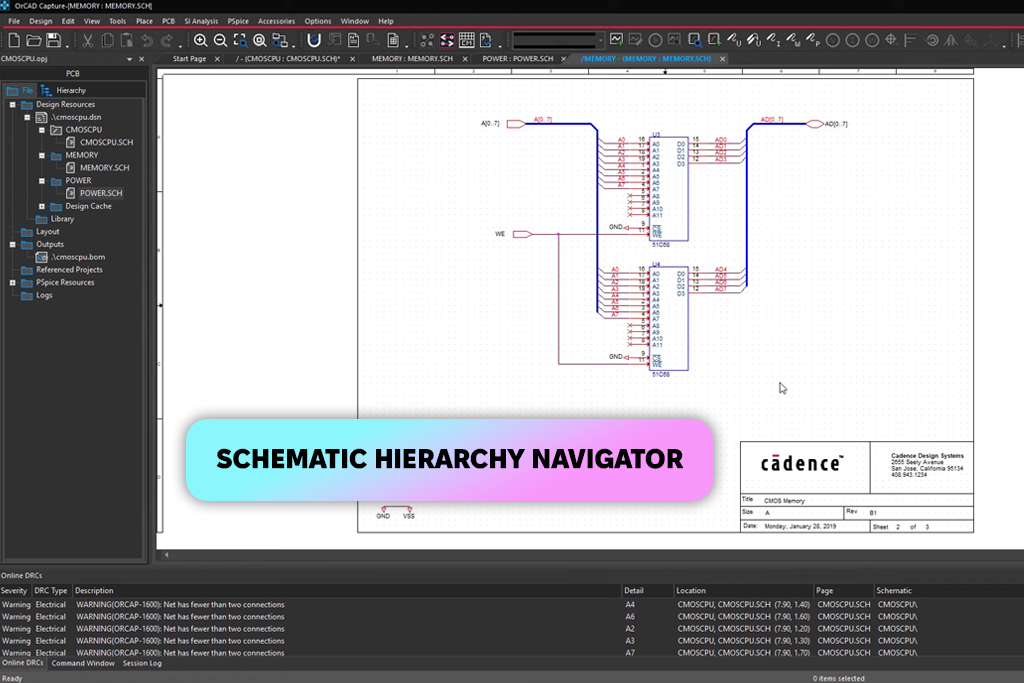
I first heard about OrCAD Capture from YouTube reviewers who said it was reliable for drawing circuit diagrams. I decided to try this electrical design software to see how it compared to Eagle in terms of ease of use and speed. To test it, I recreated a sensor interface board I had designed before. I liked its diagram editor, which was neat, responsive, and made it easy to work accurately.
I appreciate that OrCAD works with the PSpice simulation tool. This let me check if my circuit design was correct before I started designing the physical circuit board. Compared to Eagle, OrCAD’s library is more organized, though it took a bit more time to set up. I also found it much easier to set up design rules and net classes in OrCAD, which always felt awkward in Eagle.
OrCAD Capture is only for drawing circuit diagrams, as it can’t actually design the physical circuit board. To do that, you’ll need a second program called OrCAD PCB Designer.
If you’re focused on drawing and testing circuits, OrCAD Capture is much more powerful and smoother than Eagle. But if you prefer one tool that does everything in one place, you might find OrCAD less convenient, unless you decide to use the full OrCAD suite. OrCAD Capture starts at $500, which is a fair price for pro engineers, but may be expensive for hobbyists or casual users.
Pricing: from $500
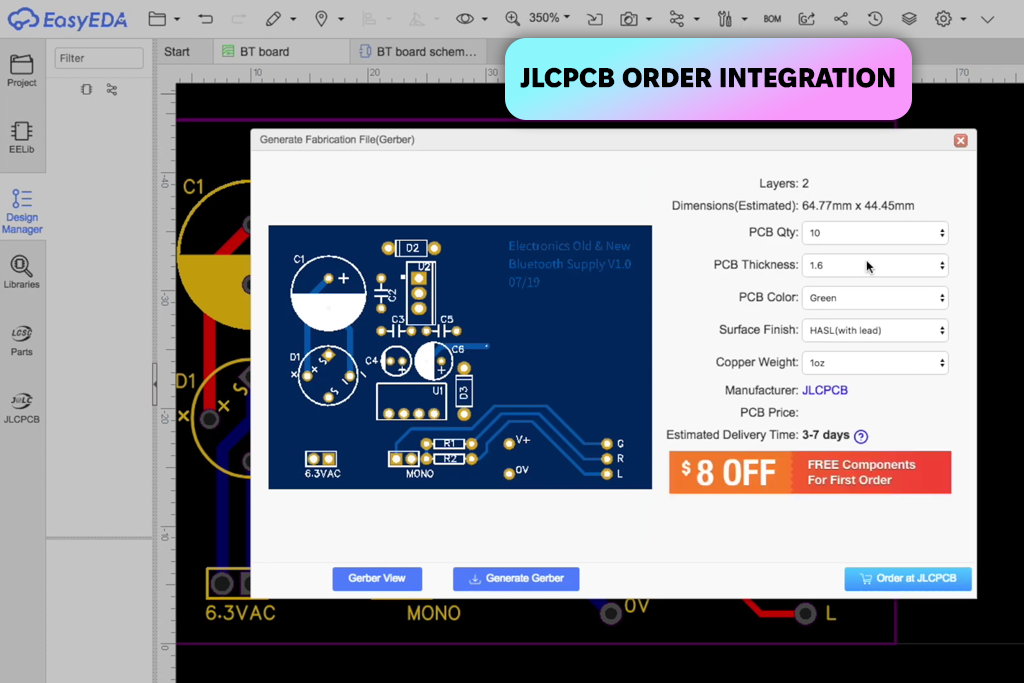
I often saw people on Reddit recommending EasyEDA as a good Eagle alternative. To try it out, I redesigned a simple Arduino shield that I had already made before, just to see how the program worked. I liked that it’s completely free PCB design and runs right in your browser - no downloads or complicated installation. That makes it easy to use on any computer.
The tool for drawing circuits was easy to learn, but still had powerful options for bigger projects.
What I loved most was how easily I could order my boards through JLCPCB, as it’s built right into the tool. Compared to Eagle, EasyEDA feels more flexible and lets you start designing much faster.
But I found that EasyEDA slows down with bigger projects, and you need an internet connection to use most features unless you download their desktop app. When I uploaded files from Eagle, simple designs worked fine, but some custom parts had to be fixed by hand. Still, if you want a free, easy-to-use tool that connects directly to a manufacturer, EasyEDA is an excellent choice.
Pricing: Free core software

I first tried NI Multisim after a colleague recommended it for its powerful simulations. To test it, I recreated a small audio amplifier circuit I had originally designed in Eagle. Unlike just doing PCB layouts, Multisim lets me fully simulate the circuit, checking waveforms, using virtual oscilloscopes, and even running fault tests.
The program’s layout felt clean and simple, almost like a CAD program for kids - with easy-to-understand icons, clear menus, and helpful guides for picking parts. The best feature was being able to test the whole circuit for mistakes before even starting the board design, something Eagle couldn’t do on its own.
The downside is that this Autodesk Eagle alternative is mostly for testing circuits, not for designing circuit boards. To make the actual board, I still had to use a different program. It costs a few hundred dollars to buy, so it’s really meant for professional engineers, not for hobbyists.
Pricing: Trial available; from $1,869/license
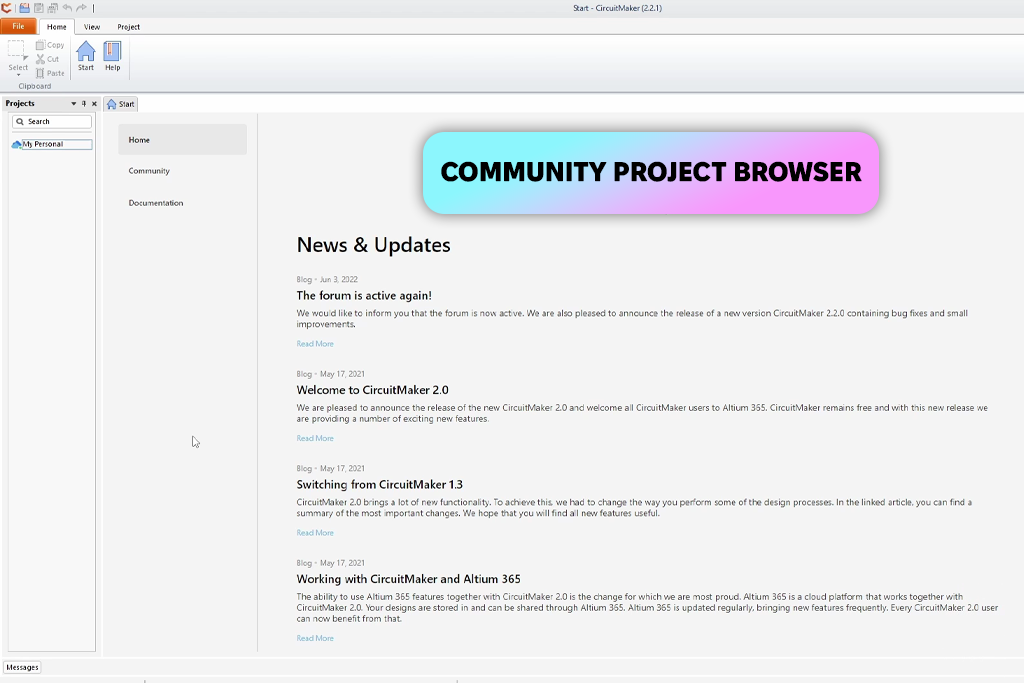
I discovered Altium CircuitMaker on YouTube, where many creators called it the “community version” of Altium Designer. Since it’s free CAD software, I decided to give it a try. To test it, I rebuilt a Wi-Fi sensor board project and checked how well it managed multi-layer layouts.
The program looked like a professional tool I already knew. It had great, easy-to-use features for designing circuits, checking for errors, and viewing the board in 3D. It was similar to another free program, but it looked more modern and polished.
The problem is that everyone can see your work unless you get a special private account. This could be a problem for people getting paid for their designs. The software is much better and free than Eagle, but you save money by giving up privacy. Moving old Eagle projects over was easy.
Pricing: Free
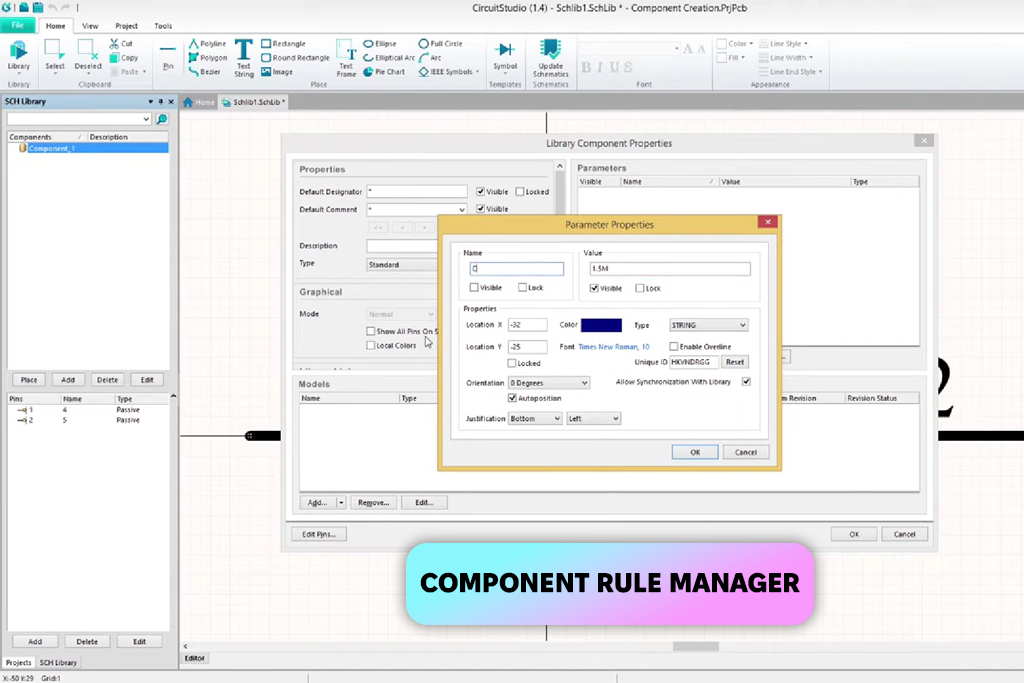
A coworker suggested I try Altium CircuitStudio. She said it’s easier to use than Altium Designer but more powerful than Eagle. I tested it by redesigning a small circuit board for a wearable device. Right away, I noticed it ran very smoothly - even on my older computer for CAD.
The program felt easy to use because it looked similar to CircuitMaker, which I had used before. This time, though, I could work without an internet connection and keep my designs completely private. The library integration worked really well, and I appreciated how the rule management felt more straightforward compared to Eagle’s often confusing system.
The drawback is that it’s a paid tool (about $1,000 for a one-time license), so it’s not the cheapest option. If you’re looking for professional-quality layouts without a subscription, it’s a good option that balances well between hobby-level and enterprise tools.
Pricing: around $1,000 for a lifelong license; free trial available
When I began searching for Autodesk Eagle alternatives, I didn’t just compare features or get misled by ads. Instead, I tested each option thoroughly using real projects - the same kind I do for clients and for myself.
I rebuilt three different circuit boards in each program: a simple Arduino shield, a small wearable PCB, and a radio frequency sensor. I handled the main design and layout myself, while FixThePhoto teammates took care of library integration and preparing the files for manufacturing. This helped us see how easy or difficult each program was for different kinds of users and tasks.
We tested each program based on:
Schematic capture quality and speed. I tested how quickly I could redraw a paper circuit design. I checked how helpful the keyboard shortcuts were, how fast I could find the symbols, and how the software managed designs spread over several pages. My team checked how easy it was to add notes and references, and if the software slowed down when working on large projects.
PCB layout tools. I routed all the traces myself on a 4-layer board to check how well push-and-shove worked, how vias were handled, and how accurate the DRC was. Meanwhile, my team made sure the parts were placed correctly, that the large metal areas were efficiently filled, and that the program’s automatic routing suggestions could be manufactured without extra corrections.
Library management. I imported my Eagle libraries to check if the footprints and symbols matched correctly. The team tried out online part sourcing, made custom footprints from datasheets, and tested version control by having several people edit the same library at once.
Collaboration features. I tested how easy it was to share design files with a teammate on a different OS and whether the file history was clear. My teammates tried out working on the same file at the same time (when possible), rolling back to earlier versions, and checking how well the tool worked with Git or cloud storage.
Export options. I created all the necessary full Gerber sets, BOMs, and 3D STEP models to make sure everything met the factory’s requirements. The team double-checked the outputs with different manufacturers to catch problems like wrong file formats, missing drill files, or tolerance errors.
Cost and value. I checked how much could actually be done on the free plan before running into limits. The team looked at the license rules, what features each tier offered, and whether paying for upgrades really made the work easier.
I tried the software on both Windows and Linux computers, including an older laptop, to see how well it would run on slower machines. I also checked if a free DWG viewer or other extra features were included, since being able to open mechanical drawings is very helpful when designing enclosures.
The whole testing period lasted just over three months, and we compared many programs side-by-side. During testing, several tools didn’t meet our selection criteria and were omitted: